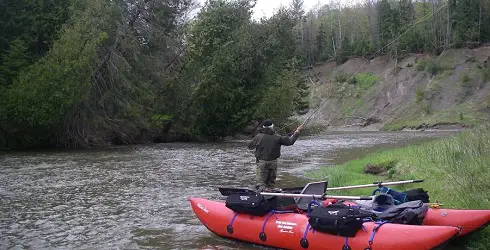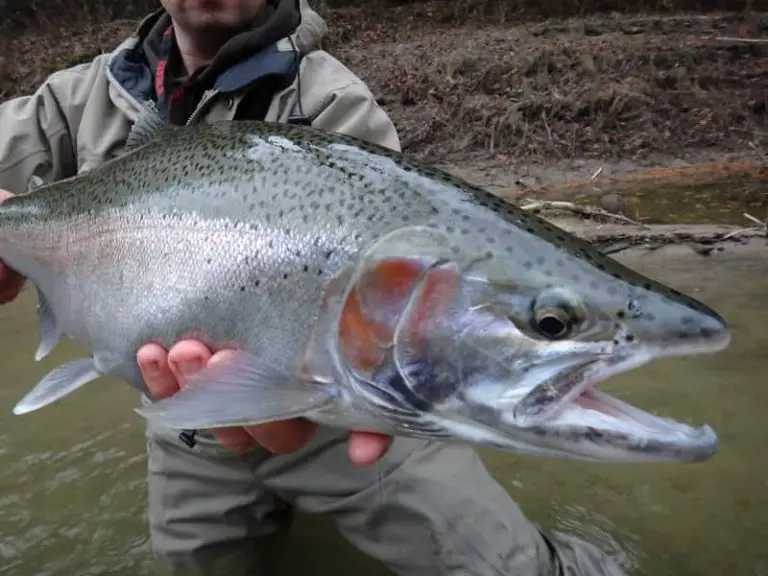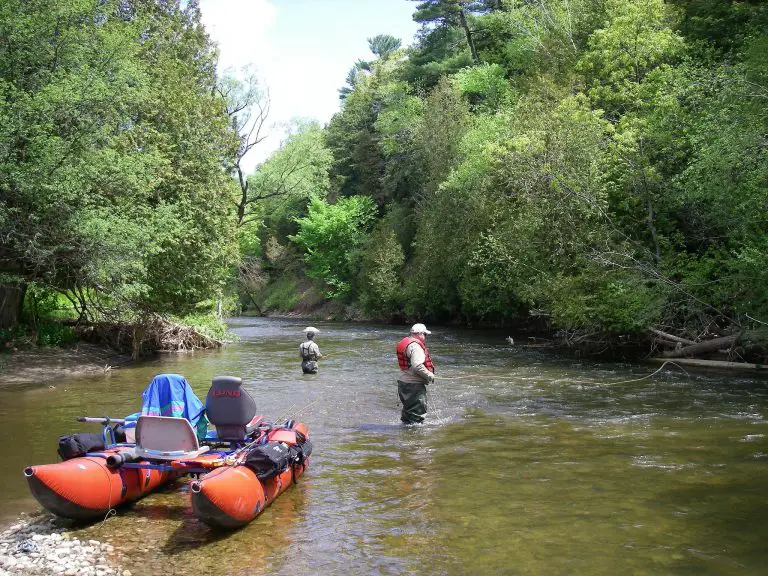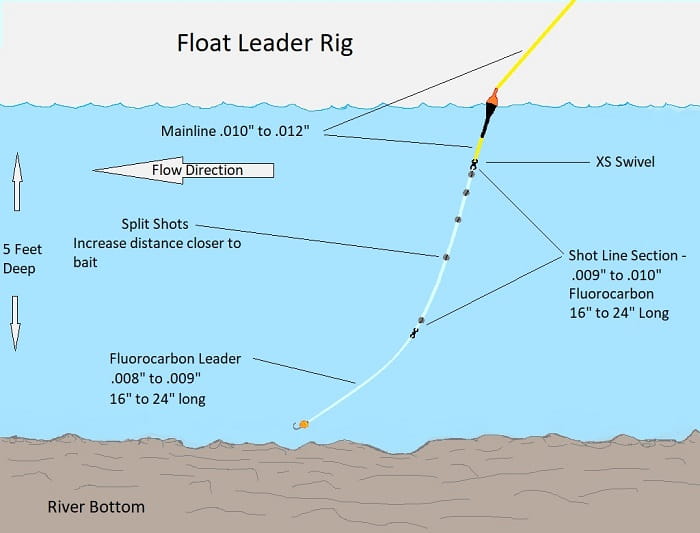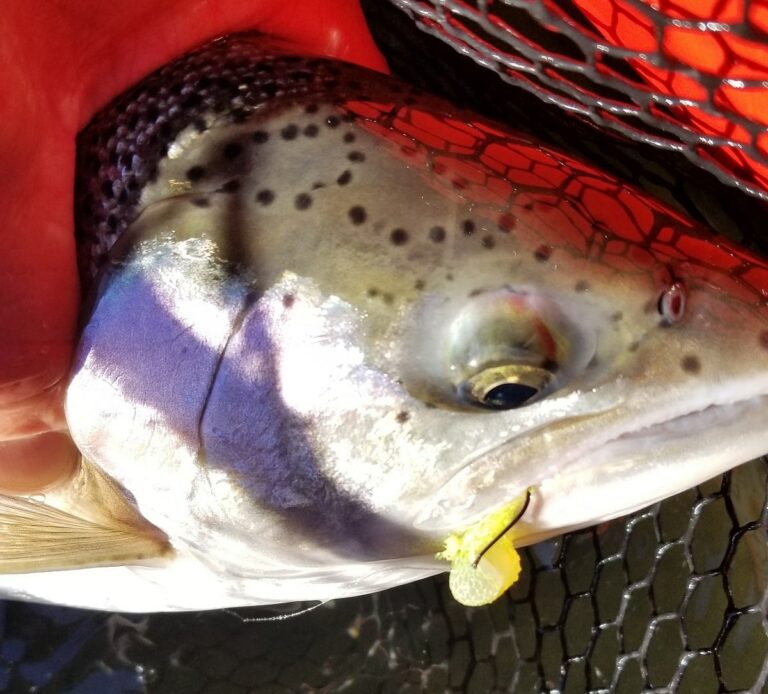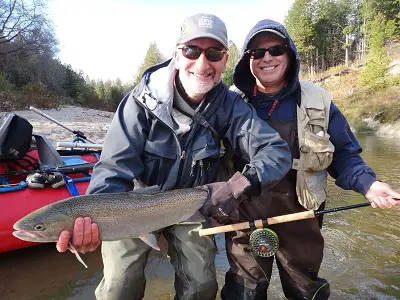SIMPLE and EFFECTIVE Bobber Doggin (NEW METHOD)
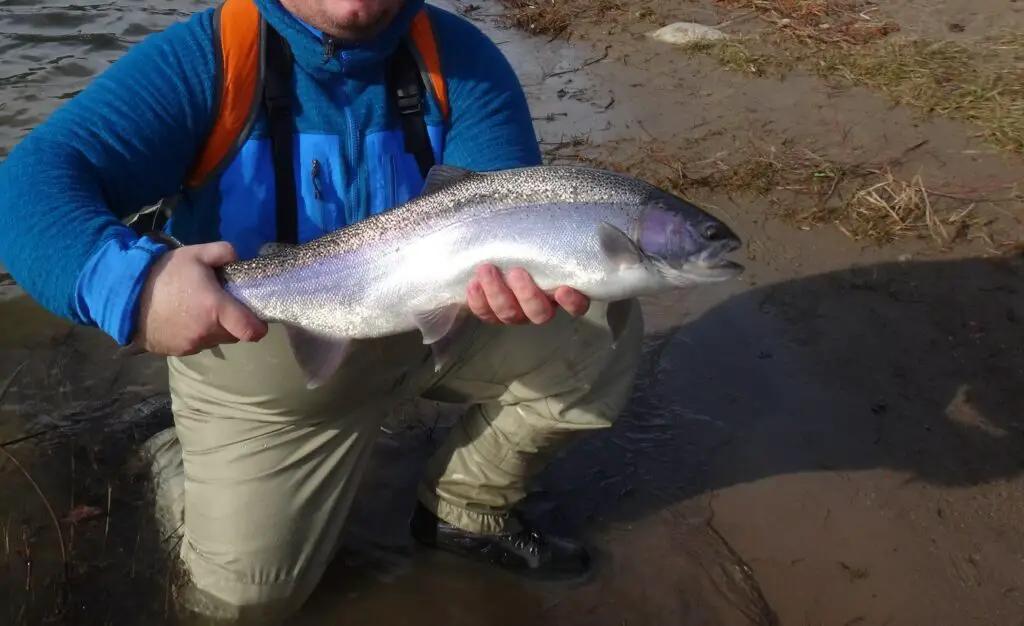
You may not have heard of it yet, but West Coast steelhead and salmon anglers are using a method called Bobber Doggin. When it comes to fishing-related things, I need to know everything! Not just because I’m a fishing guide, but because I’m always up for learning something new. I live and breathe fishing!
So, I decided to learn this new method (which is easy) and then I analyzed its effectiveness in real fishing situations for steelhead, salmon, and trout. I even split-tested it with my clients and friends against other fishing methods.
I’ll give you my honest (No BS) opinion on whether Bobber Doggin is worth using and when I found it to be more effective.
What Is Bobber Doggin? The Method
Bobber Doggin is similar to traditional float fishing or bobber fishing and is used only in rivers with current to catch steelhead, salmon, and trout. You can use any bait with this method. It is a hybrid between float fishing and drift fishing.
One large heavy weight is dragged along the bottom by a large float. The bait follows on a short leader of 12 to 24 inches. The bait drags along behind the float and stays deep in the strike zone at all times.
The above the surface, the angle can be above or below the float. Some anglers will even walk down the river beside the float as it drifts.
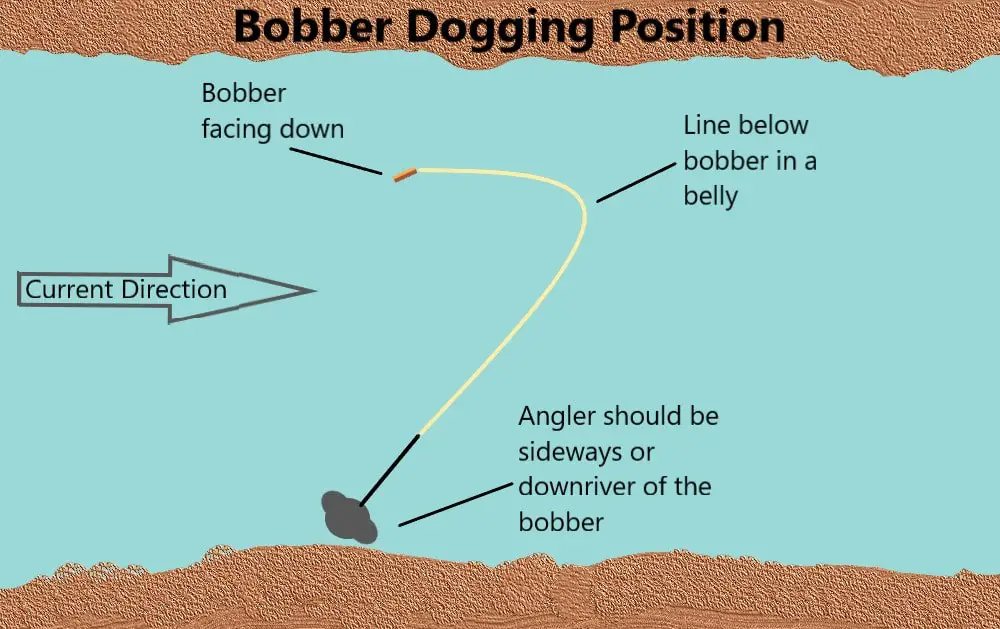
The angler wants to keep the line off the water if possible, but do not pull the float, and keep the float pointed down river. It is ok to allow a small belly of line on the surface below the float to maintain the float downward angle. Everything is dragged down the river by the current.
The idea is that the bobber will drag the heavy weight, and the heavy weight will slow the bait down and even hang it in the fish’s face attracting more bites.
Using this method also ensures your bait is down near the bottom and near the fish. The dragging of the weight is believed to slow the bait providing a more natural presentation. But does it?
The river must have some current to make this method work.
The Bobber Doggin Setup and Rigging
The setup includes a float large enough to handle a large weight, a swivel, an optional small bead, a hook, and the bait.
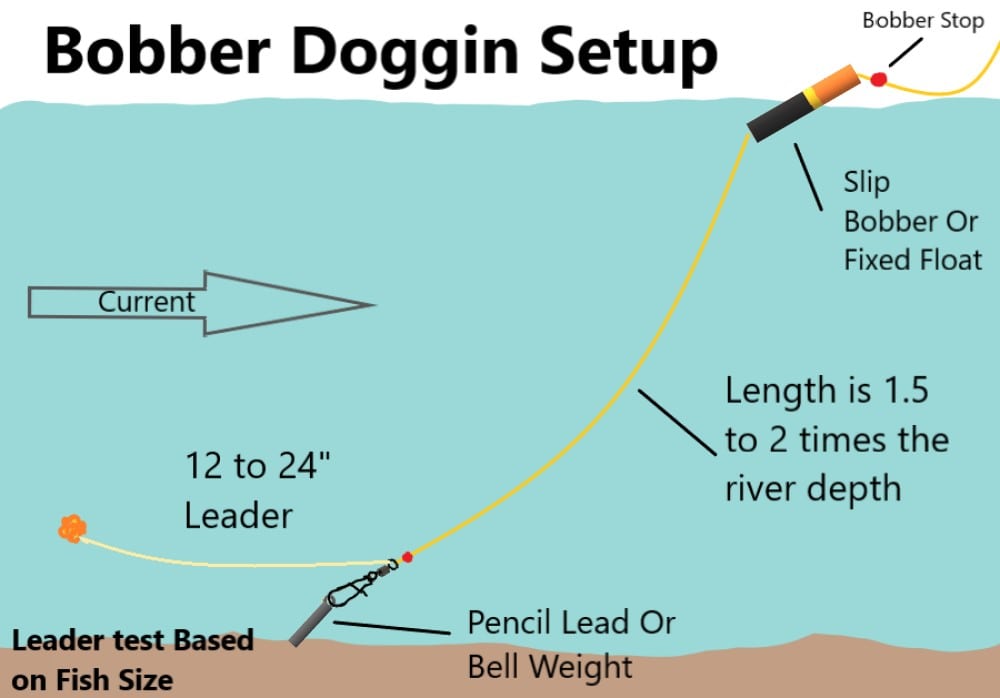
- The Float: A slip float or fixed float can be used. Any time of bobber designed for river fishing can be used. The float size depends on the weight required.
- The Weight: The weight type used is either pencil lead, a bell sinker, or a ball sinker. the size of the weight depends on the velocity and depth of the spot. Faster and deeper water requires a larger weight. Use a weight size that keeps the bait down and slowly drags along the bottom without constantly stopping.
- Swivel and Bead: You can use a snap swivel or a 3-way swivel. you attach the weight to the snap. The bead is optional. It is used to stop the slip float from hitting the swivel.
- Leader: Use a fluorocarbons leader ina size suitable for the type and size of fish you are fishing for.
- Hook and Bait: Use a high-quality octopus-style hook like the Raven Specimen hook or the Gamakatsu Octopus hook. The hook size should match the bait size. Any good bait will work.
The length of the leader depends on the depth of the spot. The leader is generally 1.5 to two times the depth of the spot.
Comparing It To Other Methods
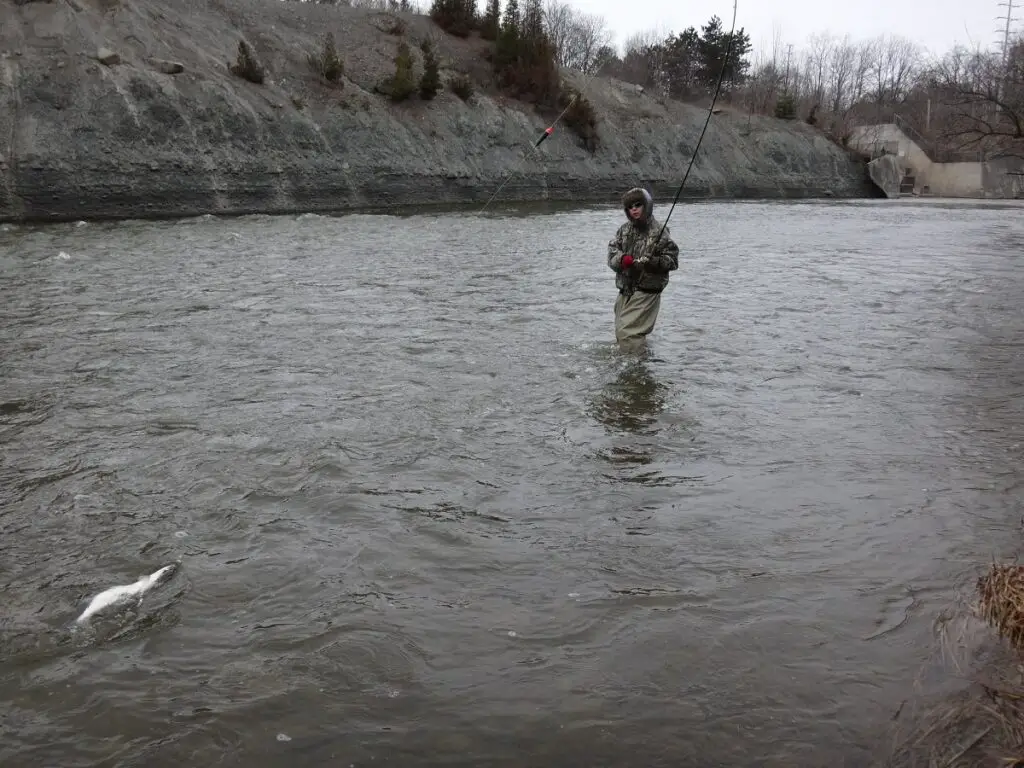
I have put a lot of thought into this method. I have tried it in all conditions, for trout, steelhead, and salmon.
I have tested it and compared it to other methods, and it does have its benefits.
Depth and Strike Zone Advantage
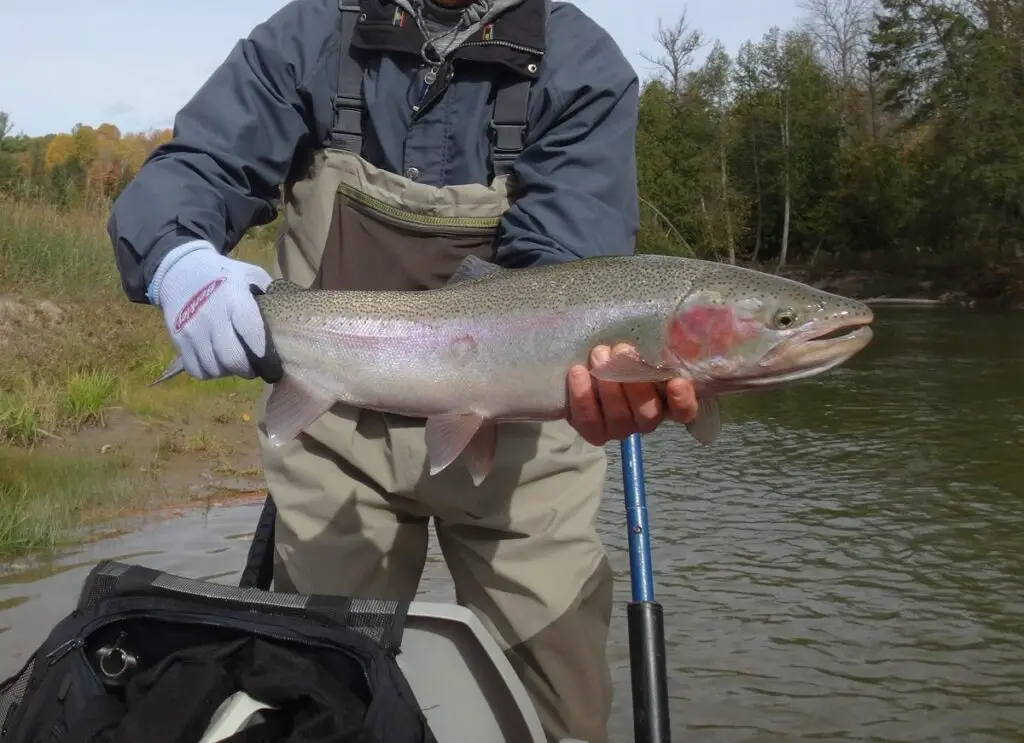
Anglers who float fish sometimes find it difficult to determine if the bait is deep enough. With Bobber Doggin, you are using a long leader with a heavy weight, which keeps your bait on the bottom and allows it to go deeper and shallower with the contour of the bottom.
This can enable anglers to get down into deep holes or trenches they may not know are there. This is harder to do with the traditional float fishing method.
Fishing Up River Advantage
There are times when you need to cast and fish an area upriver of you. This is hard to do with traditional float fishing because the current will pull your float and the suspended bait too fast.
With Bobber dogging, the angler can be upriver or downriver and the weight dragging the bottom will slow down your bait.
New Angler Advantage
This is a very easy method to set up and to fish with, and it’s hard to mess up the presentation, so for this reason, new anglers might do well with it. But . . . .
My Honest Opinion and Conclusion
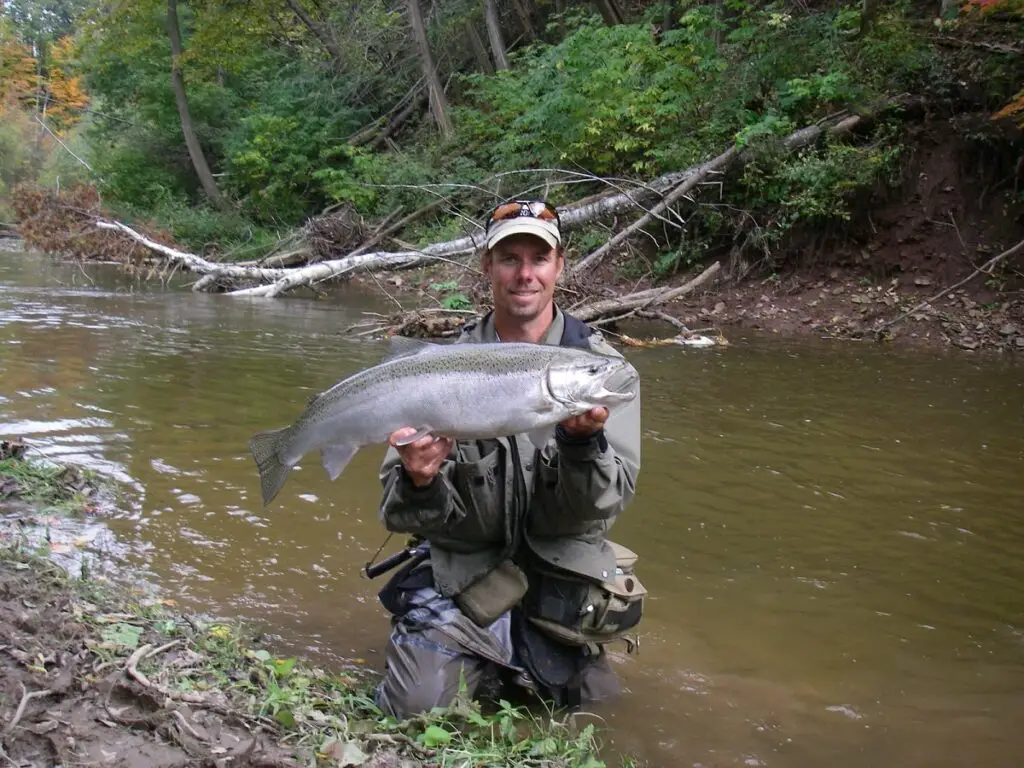
In my honest opinion, Bobber Doggin is inferior to traditional float fishing for MANY reasons, and therefore, it should not be used by experienced anglers. Even new anglers should strive to learn to do the traditional float method effectively instead.
The only time this method might actually be slightly better is if, for some reason, the angler needs to fish upriver of where they are standing because they are unable to position themselves upriver.
Traditional float fishing that is done well with proper speed control, good presentation, good water coverage, and setting the depth of the float properly for each spot is far more effective.
Based on my tests, a good Centerpin angler or float angler will catch 5 to 10 fish for every one fish the Bobber Doggin guy catches.
Tight Lines,
Graham

